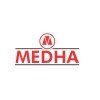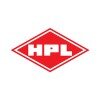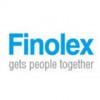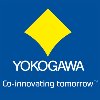
i
Eastman Auto and Power
Limited
Filter interviews by
Eastman Auto and Power Limited Interview Questions and Answers
9 Interview questions
I streamline contract and litigation management through systematic processes, collaboration, and technology integration.
Implement a centralized contract management system to track all agreements and deadlines.
Regularly review contracts for compliance and potential risks, such as a quarterly audit.
Utilize legal project management tools to streamline litigation processes and improve communication among stakeholders.
...
SAP and advanced Excel are used for data analysis, reporting, and process optimization in various business functions.
Data Management: Using SAP to manage large datasets, ensuring data integrity and accuracy for reporting purposes.
Reporting: Creating detailed reports in Excel using data extracted from SAP, such as sales performance or inventory levels.
Data Analysis: Utilizing advanced Excel functions like VLOOKUP, ...
An effective plan involves clear goals, research, strategy development, and continuous evaluation for PPC campaigns.
Define clear objectives: Set specific, measurable goals like increasing website traffic by 20% in three months.
Conduct thorough research: Analyze target audience, competitors, and keyword trends to inform your strategy.
Develop a comprehensive strategy: Choose the right platforms (Google Ads, Facebook...
Seven wastes are non-value adding activities in a process that lead to inefficiency and increased costs.
Transportation waste
Inventory waste
Motion waste
Waiting waste
Overproduction waste
Overprocessing waste
Defects waste
The pitch of m8 is 1.25 mm.
M8 is a metric screw size commonly used in machinery and automotive industries.
The pitch refers to the distance between adjacent threads on the screw.
The pitch of M8 is 1.25 mm, which means there is a 1.25 mm distance between each thread.
This information is important when selecting the appropriate nut or tapping drill size for the screw.
Star delta starter is a method used to reduce the starting current of induction motors. It involves initially connecting the motor windings in a star configuration and then switching to a delta configuration.
Star delta starter works by initially connecting the motor windings in a star configuration to reduce the starting current, and then switching to a delta configuration for normal operation.
Components of a star...
Antimony Lead % is used for positive spine in Unit-2.
Antimony Lead % is a measure of the concentration of antimony lead in the positive spine.
Positive spine refers to a specific component or feature in Unit-2.
The use of Antimony Lead % in positive spine may have certain benefits or implications.
Examples of how Antimony Lead % is used in positive spine in Unit-2 can be provided.
Antimony Lead Alloy % is used for negative grid in Unit-2.
Antimony Lead Alloy % is used to enhance the performance and durability of the negative grid in Unit-2.
The specific percentage of Antimony Lead Alloy used may vary depending on the requirements and specifications of Unit-2.
Antimony Lead Alloy is chosen for its ability to improve the corrosion resistance and mechanical strength of the negative grid.
By using ...
The use of Antimony Lead % for parts, pol, terminal, and road.
Antimony Lead % is used in various parts, such as batteries, soldering materials, and ammunition.
It is also used in the production of polycarbonate, a type of plastic.
In the automotive industry, Antimony Lead % is used in terminals for electrical connections.
Antimony Lead % is sometimes added to road construction materials to improve durability and resi...
Eastman Auto and Power Limited Interview Experiences
30 interviews found
I appeared for an interview in May 2025, where I was asked the following questions.
- Q1. Technical question all
- Q2. Carrier question all
- Q3. Back history All
I appeared for an interview in Oct 2024, where I was asked the following questions.
- Q1. Can you tell me about yourself?
- Q2. What are your activities or responsibilities during the hours of 8 AM to 5 PM?
- Ans.
As a PPC Executive, my day involves campaign management, keyword research, and performance analysis to optimize ad spend.
Campaign Management: I oversee multiple PPC campaigns, ensuring they align with client goals and budgets, adjusting bids as necessary.
Keyword Research: I conduct thorough keyword research using tools like Google Keyword Planner to identify high-performing keywords for targeting.
Performance Analysis: ...
- Q3. How many people are expected to attend the PPC meeting, and what topics will be discussed?
- Ans.
The PPC meeting is expected to have around 20 attendees discussing strategies, performance metrics, and campaign optimizations.
Attendee Count: Approximately 20 participants, including PPC specialists, marketing managers, and data analysts.
Performance Metrics: Discussion on key performance indicators (KPIs) such as click-through rates (CTR) and conversion rates.
Campaign Strategies: Review of current PPC strategies and b...
- Q4. What types of work do you perform using SAP and advanced Excel?
- Ans.
SAP and advanced Excel are used for data analysis, reporting, and process optimization in various business functions.
Data Management: Using SAP to manage large datasets, ensuring data integrity and accuracy for reporting purposes.
Reporting: Creating detailed reports in Excel using data extracted from SAP, such as sales performance or inventory levels.
Data Analysis: Utilizing advanced Excel functions like VLOOKUP, pivot...
- Q5. How do you manage pressure in a work environment?
- Ans.
I handle pressure by staying organized, prioritizing tasks, and maintaining open communication with my team to ensure efficiency.
Prioritization: I create a daily to-do list to prioritize tasks based on urgency and importance, ensuring that critical deadlines are met. For example, during a recent campaign launch, I focused on high-impact tasks first.
Time Management: I allocate specific time blocks for each task, which h...
- Q6. What are your job responsibilities?
- Q7. How do you create an effective plan?
- Ans.
An effective plan involves clear goals, research, strategy development, and continuous evaluation for PPC campaigns.
Define clear objectives: Set specific, measurable goals like increasing website traffic by 20% in three months.
Conduct thorough research: Analyze target audience, competitors, and keyword trends to inform your strategy.
Develop a comprehensive strategy: Choose the right platforms (Google Ads, Facebook Ads)...
I appeared for an interview in Dec 2024, where I was asked the following questions.
- Q1. How do you manage contract and litigation management processes?
- Ans.
I streamline contract and litigation management through systematic processes, collaboration, and technology integration.
Implement a centralized contract management system to track all agreements and deadlines.
Regularly review contracts for compliance and potential risks, such as a quarterly audit.
Utilize legal project management tools to streamline litigation processes and improve communication among stakeholders.
Estab...
- Q2. What are your plans for managing the team?
- Ans.
I plan to foster a collaborative environment, prioritize professional development, and ensure clear communication within the team.
Establish regular team meetings to discuss ongoing projects and address any concerns, ensuring everyone is aligned.
Implement a mentorship program where experienced team members guide newer ones, enhancing skills and knowledge sharing.
Encourage open communication by creating an anonymous feed...
I applied via Naukri.com and was interviewed in Nov 2023. There were 2 interview rounds.

(3 Questions)
- Q1. Use Antimony Lead Alloy % For Negative Grid. (Unit-2)
- Ans.
Antimony Lead Alloy % is used for negative grid in Unit-2.
Antimony Lead Alloy % is used to enhance the performance and durability of the negative grid in Unit-2.
The specific percentage of Antimony Lead Alloy used may vary depending on the requirements and specifications of Unit-2.
Antimony Lead Alloy is chosen for its ability to improve the corrosion resistance and mechanical strength of the negative grid.
By using Antim...
- Q2. Use Antimony Lead % For Positive Spine. (Unit-2)
- Ans.
Antimony Lead % is used for positive spine in Unit-2.
Antimony Lead % is a measure of the concentration of antimony lead in the positive spine.
Positive spine refers to a specific component or feature in Unit-2.
The use of Antimony Lead % in positive spine may have certain benefits or implications.
Examples of how Antimony Lead % is used in positive spine in Unit-2 can be provided.
- Q3. Use Antimony Lead % For Parts, Pol, Terminal and Road.
- Ans.
The use of Antimony Lead % for parts, pol, terminal, and road.
Antimony Lead % is used in various parts, such as batteries, soldering materials, and ammunition.
It is also used in the production of polycarbonate, a type of plastic.
In the automotive industry, Antimony Lead % is used in terminals for electrical connections.
Antimony Lead % is sometimes added to road construction materials to improve durability and resistanc...
Interview Preparation Tips
- Q1. Old company position and working skills
- Q2. Reason for company resign and new joining achievement and work progress
I applied via Job Portal and was interviewed in Aug 2023. There were 4 interview rounds.
(1 Question)
- Q1. New Technical Scale Up, Process Improvement
(1 Question)
- Q1. Experience, Manpower Handling, New Technology
(1 Question)
- Q1. Salary slip, Bank Statement
(1 Question)
- Q1. Family , Relocation, Decision Making, Joining
Interview Preparation Tips
(1 Question)
- Q1. Your expereince
I applied via Approached by Company and was interviewed in Sep 2023. There were 3 interview rounds.

(1 Question)
- Q1. As per the requirement
(1 Question)
- Q1. Cross-functional team discussion
Interview Preparation Tips
I applied via Job Fair and was interviewed in Nov 2023. There was 1 interview round.
(1 Question)
- Q1. Just basic introduction
I applied via Referral and was interviewed in Sep 2023. There were 3 interview rounds.
Some genral questions
(2 Questions)
- Q1. Tell me about youself
- Q2. All the basic information
(1 Question)
- Q1. You see job as an product
Top trending discussions






Eastman Auto and Power Limited Interview FAQs
Some of the top questions asked at the Eastman Auto and Power Limited interview -
The duration of Eastman Auto and Power Limited interview process can vary, but typically it takes about less than 2 weeks to complete.
Tell us how to improve this page.
Eastman Auto and Power Limited Interviews By Designations
- Eastman Auto and Power Limited Assistant Manager Interview Questions
- Eastman Auto and Power Limited Engineer Interview Questions
- Eastman Auto and Power Limited Senior Engineer Interview Questions
- Eastman Auto and Power Limited Purchase Executive Interview Questions
- Eastman Auto and Power Limited Production Manager Interview Questions
- Eastman Auto and Power Limited Quality Engineer Interview Questions
- Eastman Auto and Power Limited Team Manager Interview Questions
- Eastman Auto and Power Limited Intern Interview Questions
- Show more
Interview Questions for Popular Designations
- Intern Interview Questions
- Business Analyst Interview Questions
- Senior Engineer Interview Questions
- Sales Executive Interview Questions
- Associate Software Engineer Interview Questions
- Graduate Engineer Trainee (Get) Interview Questions
- Accountant Interview Questions
- Senior Software Engineer Interview Questions
- Show more
Overall Interview Experience Rating
based on 34 interview experiences
Difficulty level
Duration
Interview Questions from Similar Companies
Eastman Auto and Power Limited Reviews and Ratings
based on 373 reviews
Rating in categories
|
Assistant Manager
133
salaries
| ₹3.8 L/yr - ₹9.1 L/yr |
|
Area Sales Manager
58
salaries
| ₹3 L/yr - ₹9 L/yr |
|
Senior Engineer
49
salaries
| ₹3 L/yr - ₹6.2 L/yr |
|
Senior Executive
44
salaries
| ₹3.4 L/yr - ₹6 L/yr |
|
Engineer
43
salaries
| ₹1.9 L/yr - ₹5 L/yr |
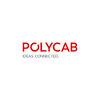
Polycab Wires

CG Power and Industrial Solutions
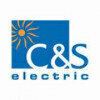
C&S Electric

KEI Industries
- Home >
- Interviews >
- Eastman Auto and Power Limited Interview Questions


